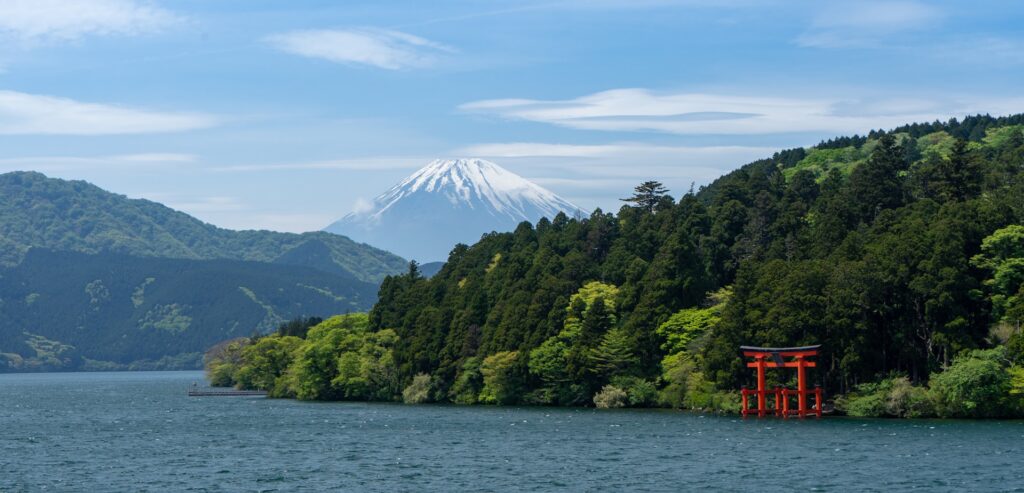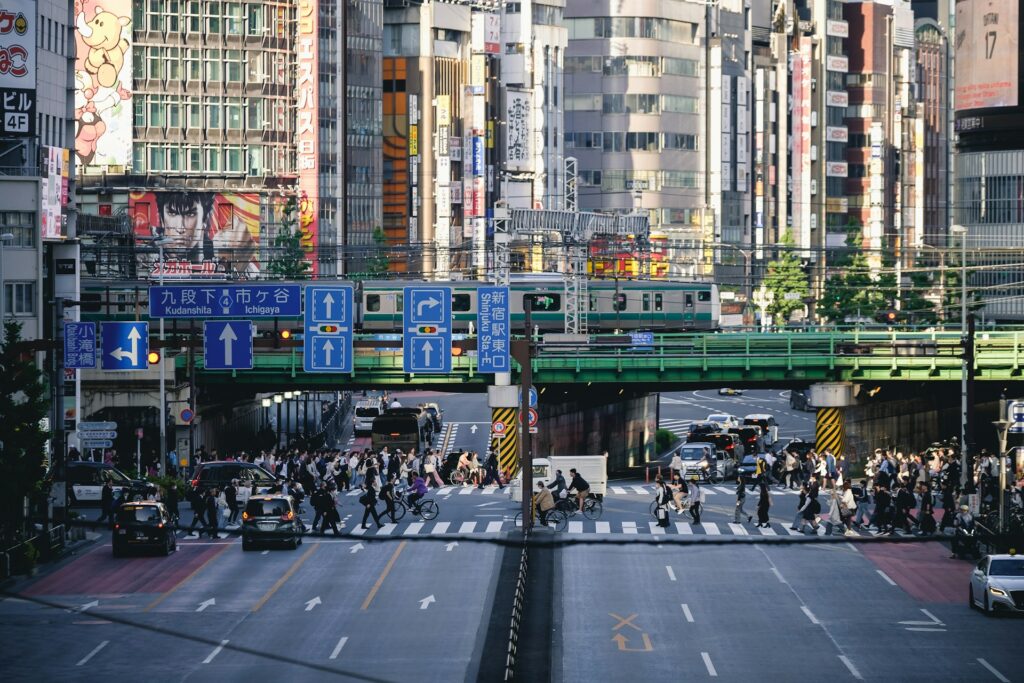Japan is a place that doesn’t just invite you to look—it invites you to feel. It’s a country where contrasts coexist effortlessly: temples stand beside skyscrapers, and the sound of chanting monks blends with the hum of high-speed trains. Few journeys capture this mix more beautifully than pairing the stillness of Mount Fuji with the energy of Tokyo.

Mount Fuji: A Sacred Silhouette
Mount Fuji is more than a mountain—it’s Japan’s eternal muse. Its perfect cone rises high above forests and lakes, commanding attention whether glimpsed from a bullet train window or admired in full view on a clear day. For centuries, Fuji has been revered in poetry, painting, and prayer, a symbol of beauty and resilience.
Hikers tackle its trails in summer, but many visitors prefer to admire Fuji from afar—on a lakeside walk, in a quiet hot spring, or through the lens of a camera that never quite captures its true grandeur.
It’s no surprise that the mountain consistently appears in collections of the top Japan trips, often alongside Kyoto’s serene gardens and Hiroshima’s poignant Peace Memorial. For many, Fuji isn’t just a destination; it’s a moment of connection with Japan itself.
Shinjuku: The City That Never Sleeps
If Fuji is about silence, Shinjuku is about sound. This Tokyo neighbourhood pulses with energy, especially after dark when neon lights blaze across the skyline and narrow alleyways fill with the scent of grilled yakitori.
In Omoide Yokocho, tiny izakayas squeeze in just a handful of diners, their chatter spilling into the night. A few streets away, department stores bustle with shoppers, while karaoke bars echo with laughter. And then there’s the view from the Tokyo Metropolitan Government Building—step onto its observation deck and the city stretches endlessly, glittering like a sea of stars.
It’s easy to see why curated Tokyo tours 2025 highlight Shinjuku as the beating heart of the capital. Here you can taste street food, wander through glowing entertainment districts, or step into the calm of Shinjuku Gyoen National Garden, where cherry blossoms or autumn leaves provide a welcome contrast to the city’s electric pace.

Tradition Beneath the Lights
Tokyo thrives on contrasts. In Asakusa, the towering red lantern of Sensō-ji Temple welcomes visitors with centuries of history. The streets nearby hum with stalls selling hand-made crafts, sweet rice crackers, and steaming taiyaki pastries. It feels worlds away from Shinjuku’s skyscrapers, yet only a short ride separates them.One moment you’re praying at a temple, the next you’re scrolling through the latest fashion in Harajuku or Ginza. The city never stands still, yet it always carries its past with it.
Fuji’s Spirit Beyond the Peak
Around Mount Fuji, small towns and villages keep the mountain’s spiritual significance alive. Shrines such as Fujisan Hongū Sengen Taisha honour its sacred role, while seasonal festivals celebrate its enduring presence in Japanese folklore.
The surrounding Fuji Five Lakes region offers even more ways to experience the landscape. These are the kind of experiences that feel restorative—moments where nature, culture, and calm come together.
Tokyo’s Many Faces
Tokyo’s diversity is part of its charm. Shibuya is famous for its crossing, where hundreds of people move in unison with each light change—a spectacle in its own right. Ginza exudes elegance, with sleek galleries and designer boutiques. Everywhere, food is central: steaming bowls of ramen, sushi so fresh it melts in your mouth, and late-night plates of gyoza savoured in tucked-away eateries.
Every neighbourhood has its own personality, but together they create a city that feels alive in every sense.
Two Worlds in Harmony
What makes combining Mount Fuji with Tokyo so memorable is the balance they create together. Fuji offers perspective, stillness, and awe; Tokyo brings energy, innovation, and spectacle. Between them lies the essence of Japan—a country deeply rooted in tradition yet racing toward the future with unshakable vitality.
High-speed trains make moving between the two easy, transforming the journey itself into part of the adventure. Watching Fuji fade behind you as Tokyo’s skyline rises ahead is like turning the page in a story that still feels connected.
Conclusion: Memories That Stay
To watch dawn break over Mount Fuji is to feel the quiet strength of nature. To walk through Shinjuku at night, lights flashing above you, is to feel the pulse of modern life. Experiencing both is to understand Japan not just as a destination, but as a journey of contrasts—moments of peace balanced with bursts of energy.
What lingers long after are the small details: the rustle of wind in a temple garden, the warmth of sake shared with new friends, the glow of neon on wet streets, the silhouette of Fuji against a pale morning sky. These are the textures of travel that stay with you, shaping not just what you remember, but how you feel.
From the sacred to the spectacular, Japan invites travellers to step into experiences that touch both heart and imagination. Mount Fuji and Shinjuku may seem worlds apart, yet together they capture the essence of a country that continues to surprise and inspire.
